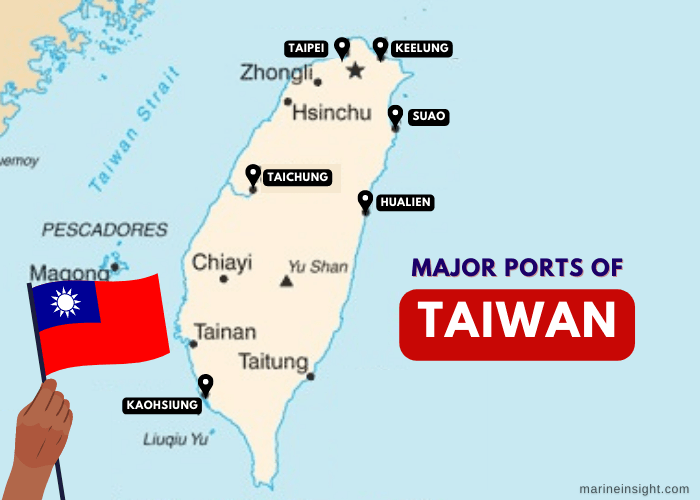8 Major Ports of Taiwan
The East Asian nation of Taiwan is a developed economy driven by the Services and manufacturing sectors. Due to the decreasing involvement of the State in the sphere of Business and foreign investment, growing privatisation and its trade relations with the US, it has witnessed rapid growth and recently ranked as the 6th freest economy in 2022.
The country’s exports are dominated by electronics followed by textiles and its imports constitute raw materials as it is deficient in natural resources. The major trading partners of Taiwan include the USA, China, Japan, European Union countries and Hong Kong.
Foreign trade has been a major driver of the economic growth of Taiwan. It has 15 ports and harbours out of which 4 ports facing the Pacific handle more than half of its international maritime trade. In this article, let us look at the major ports in Taiwan.
Port of Kaohsiung
Situated on Taiwan’s southwestern coastline, Kaohsiung port is the major port of the island nation and also ranks among the biggest container handling facilities in the world. Due to its strategic geographical location in the nation’s industrial region, it is frequented by more than 5000 vessels and handles approximately 18,900,000 tonnes of cargo and 9,800,400 TEU annually.
Functioning as Taiwan’s Logistics hub and a transhipment centre of the Asia-pacific region, along with being an important fishing port, it is pivotal for the Taiwanese economy. Operated by the Kaohsiung Harbour Burea, the port is endowed with the latest technologies and port equipment to ensure maximum operational efficiency.
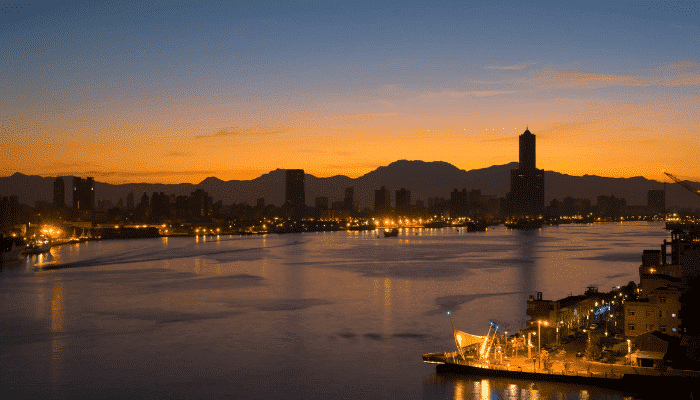
Kaohsiung’s major exports include agricultural commodities manufactured in the southern part of Taiwan. The city of Kaohsiung also houses numerous factories producing aluminium, sugar, tiles, bricks, metals, plastics, paper, chemicals and textiles which are shipped through this port facility.
The port comprises 121 docks spanning 28 thousand m, 70 warehouses with a cargo storage capacity of 100,000 tonnes. It also has 7 open yards with a total capacity of 36,000 tonnes for keeping containers.
Berths are designated for handling specific cargoes, for instance, 27 wharves handle conventional cargo, 25 berths deal with liquid cargo such as oil and petroleum as well as coal, while 23 docks serve container ships. The port also has 5 container terminals situated in the region’s free-trade zone.
Port of Anping
Anping is the most important auxiliary port of Kaohsiung port, lying on the southwestern Taiwanese coastline. This is an ancient port dating back to the Ming period and was once Taiwan’s biggest harbour, however, its importance declined due to excessive silt deposition, which blocked the vessels’ entry into the harbour.
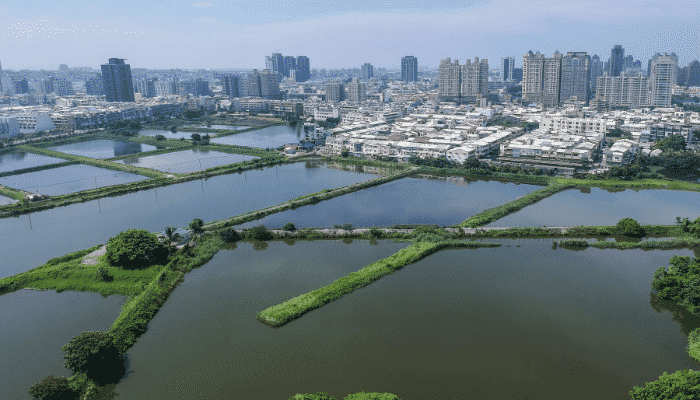
Presently it operates as a cargo port handling cargoes of construction material, plastic goods, steel products, chemicals etc. Due to its favourable position amidst the industrial region, the Kaohsiung harbour Bureau has undertaken a port development project to refurbish it, boost local regional development and generate employment. There are further plans to transform it into a multifunctional port serving the biggest passenger ships, and creating new maritime connections linking the Southeast Asian region, China, Hong Kong and Northern Asia.
Spanning 239 hectares, the port comprises 19 wharves capable of accommodating Bulk carriers weighing around 35,000 tonnes, 2000 TEU container ships, and 70,000 tonnes cruise ships. The entrance channel is 179 m wide and 11.5 m deep. The port handles around 18 million tonnes of bulk cargo annually.
Port of Keelung
The second biggest port of Taiwan, Keelung is situated on the nation’s northern coastline. It has a natural harbour and is in proximity to Hong Kong. Visited by more than 3000 vessels, the port handles 1,760,000 TEU annually. It handles minerals, construction equipment, oil, petroleum etc.
It comprises 56 berths spanning 10 kilometres, divided between the two-port areas.
The West Coast area has 26 berths while the eastern coast area has 14 berths. The port has 40 storage facilities spanning 13 acres, capable of keeping 128,000 tonnes of cargo. Additional 30 storage facilities are leased to private companies.
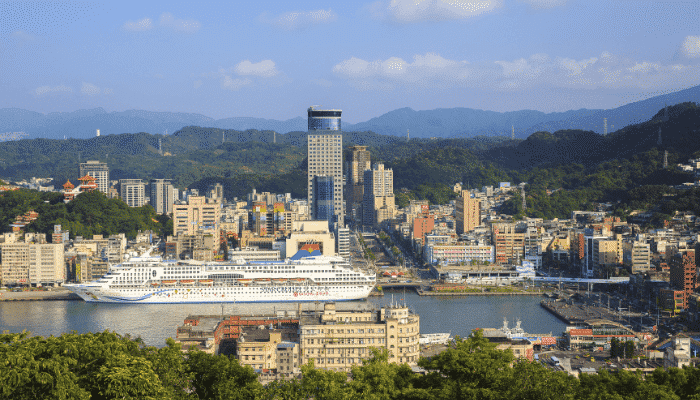
The port offers extensive container handling facilities, with 15 container berths and 25 container yards and 14 stacking yards capable of storing 400,000 tonnes of containerised cargo. Two container terminals – The East and the West terminals are equipped with the biggest gantry cranes, reach stackers, forklifts and straddle carriers for efficient container handling. The port also has Breakbulk terminals comprising 6 wharves.
Two oil terminals, Shen-ao Oil terminal and Sha Lung Oil Terminal are also located in the western port region. One wharf in the eastern region serves cruise and passenger ships.
Suao Port
The port of Su-ao lies on the Bay of Suao in the northeastern region of Taiwan. It is a natural harbour that serves as an auxiliary port facility to the Keelung Harbour and has boosted the local economy in the Lanyang region.
It handles around 6,000,000 tonnes of cargo and 5,000,000 TEU every year. With growing maritime cargo traffic each year, the port is transforming into an important international commercial facility in the Asian Region. The port handles exports of cement, construction equipment, chemicals like Paraxylene acid and potassium sulphate while imports comprise coal, slag, steel billets and fuel.
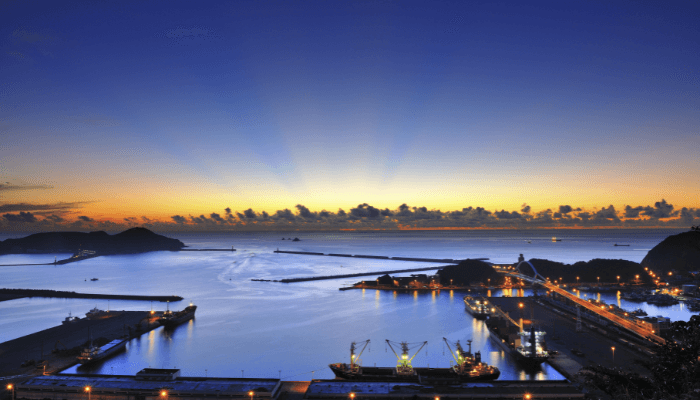
It covers an area of around 850 thousand sq m and includes 13 docks spanning 2600 m. These wharves handle specific cargoes such as 6 dedicated to sundries goods, 2 for chemical products and hazardous substances, 2 for cement, 1 for coal and another for petroleum products. One berth handles only service vessels. These berths have an average water depth between 8 to 15 m, capable of accommodating Panamax size ships weighing around 80,000 DWT.
The port is equipped with excellent facilities and modern operational systems along with 4 tugs, a patrolling vessel and a fully automated port surveillance system. It has expansive storage space and a yard that has been leased to three private companies, utilised for loading and unloading sundries and bulk cargo.
Port of Taipei
The Taipei port is the biggest container facility in the northern region of Taiwan. Built by reclamation of coastland and comprising an artificial harbour, it is located in Pali close to Keelung port. It was dredged and expanded using innovative technologies to achieve the highest productivity and lower the project’s environmental impact.
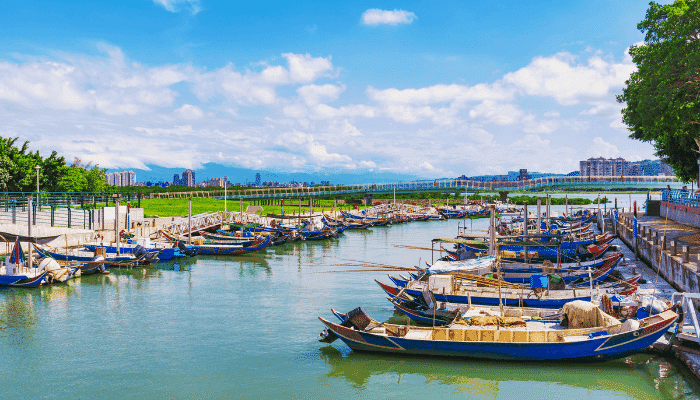
About 2850 ships frequent the port every year. Its total annual cargo throughput is around 38,400,000 tonnes and it also handles 440,760 TEU. The port is equipped with the latest port system such as wireless sensors and automated loading and unloading operations, which have boosted the port’s efficiency by 15%. Such systems have also been installed at the General Cargo Terminal as well
Also called Tan-Shui, this port is being constructed in three phases out of which the first was completed in 2012. Presently, the port has 14 operational docks that deal with shipments of petrochemicals, containerised goods and bulk. The port also has 7 berths exclusively for handling containers with an annual capacity of more than 2,600,000 TEUs. The port has enormous storage space and 6 warehouses for storing bulk cargoes. Separate paved space is available for keeping containers.
Mailiao Harbor
The Mailiao port is situated in the Industrial region of the county of Yunlin. It is an artificial harbour that was formed after the coastal area was dredged. The aim of constructing this harbour was to boost local economic growth by establishing businesses and manufacturing units.
A port development project constructed specialised wharves and port facilities along with the vision of making it the deepest and the largest commercial port of Taiwan specialising in shipments of raw material and packaged industrial products. It is estimated that at its full capacity, the port would handle 69 million tonnes each year.
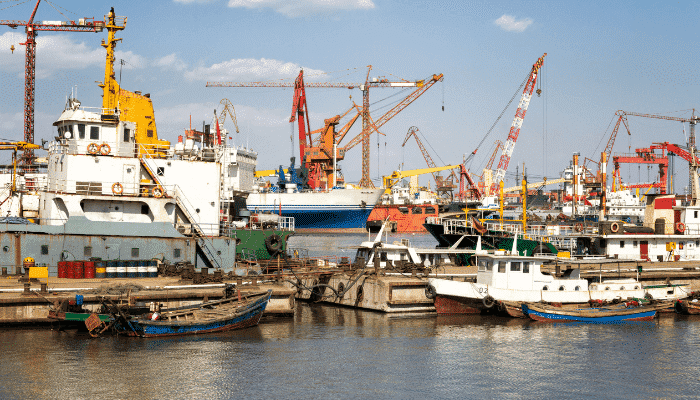
The port spans 475 hectares and comprises 20 specialised wharves and 10 public berths, divided into three port areas. The North dock handles shipments of asphalt, LPG, Chemicals and Oil while the Eastern dock is a multipurpose facility dealing with industrial salt, coal, cement, caustic soda, chemicals and LPG. The western facility deals with only crude oil. Numerous warehouses and storage spaces are located near the main port area. Mailiao harbour also has a shipyard offering ship repair, maintenance and also a workshop.
Hualien Port
This port facility lies on the eastern coastline of the island nation facing the Pacific Ocean. It is an artificial harbour, built-in 1930 and opened for international trade in 1963. The region is prone to typhoons hence vessels operating to and from the port should be equipped with additional moorings. It also has a drydock capable of accommodating ships weighing more than 20,000 tonnes.
The port handles exports of gravel, stones, cement, bamboo, sugar, lumber, paper and imports of gypsum, coal, cooking oil, and logs. The annual cargo throughput of Hualien is estimated to be 17,500,000 tonnes.
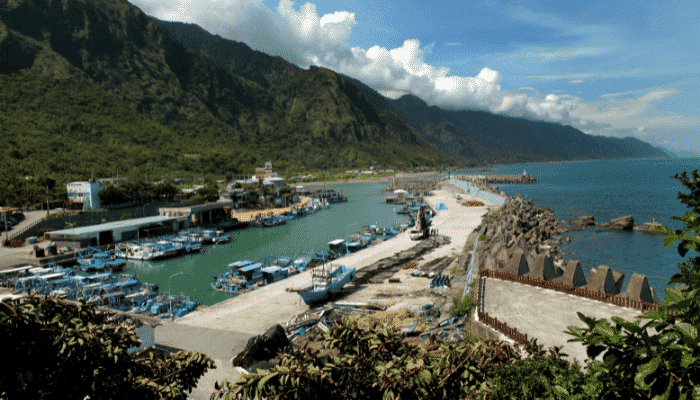
It spans 172 hectares which include 25 berths, 16 in the Inner-harbour and 9 berths in the Outer harbour. The main port area has 7 warehouses covering 34,000 sq m with a capacity of storing 82,000 tonnes of cargo and 37 yards with a total cargo storage capacity of 520,000 tonnes.
The inner port has two silos for storing 8000-ton cement while the outer port has 3 tanks for keeping cement, clinker etc. Minerals and gravel are stored in the port’s 37 stacking yards. Inner harbour can accommodate vessels weighing around 12,000 DWT while outer harbour can accommodate vessels up to 100,000 DWT.
Taichung Port
This port is situated on the western coastline of Taiwan and is the first international commercial facility constructed by Taiwan’s engineers. It is a crucial port handling imports of grain, logs, cement, coal, chemicals, molasses, iron, steel goods and refined oil. The port exports food and packaged food, rice, wood, textiles, paper, pulp, fertilisers, glass etc. It handles more than 4000 ships and 1.7 million TEU annually. The total annual cargo throughput of Taichung was recorded to be 64. 8 million tonnes. Apart from cargo ships, it is also frequented by passenger vessels, shipping boats and cruises.
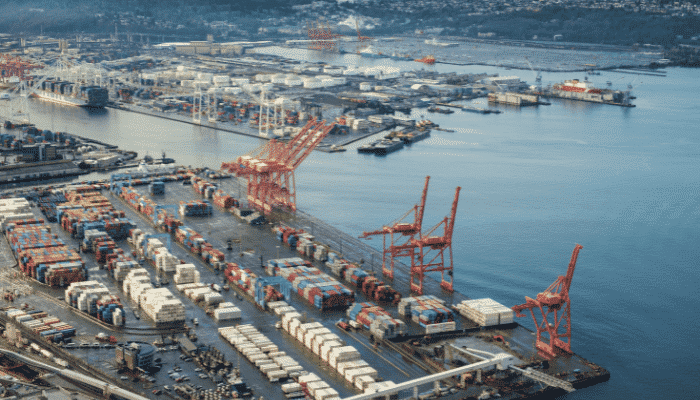
Its entrance channel is 330 m broad and 16 m deep. The port spans 2900 hectares and comprise 58 wharves with a depth of 9 m to 18 m. The container handling area of the port includes 8 berths covering 2378 m with an alongside depth of 13 m.
These are rented to private shipping companies. 9 berths are used for handling bulk and breakbulk. The Taiwan power company has rented the coal loading facility while another berth is dedicated exclusively for steel goods. The port also has two terminals handling liquid bulk such as chemicals and fuels.
You might also like to read:
Disclaimer: The authors’ views expressed in this article do not necessarily reflect the views of Marine Insight. Data and charts, if used, in the article have been sourced from available information and have not been authenticated by any statutory authority. The author and Marine Insight do not claim it to be accurate nor accept any responsibility for the same. The views constitute only the opinions and do not constitute any guidelines or recommendations on any course of action to be followed by the reader.
Do you have info to share with us ? Suggest a correction
Latest Maritime Knowledge Articles You Would Like:
Subscribe To Our Newsletters
By subscribing, you agree to our Privacy Policy and may receive occasional deal communications; you can unsubscribe anytime.
Web Stories



